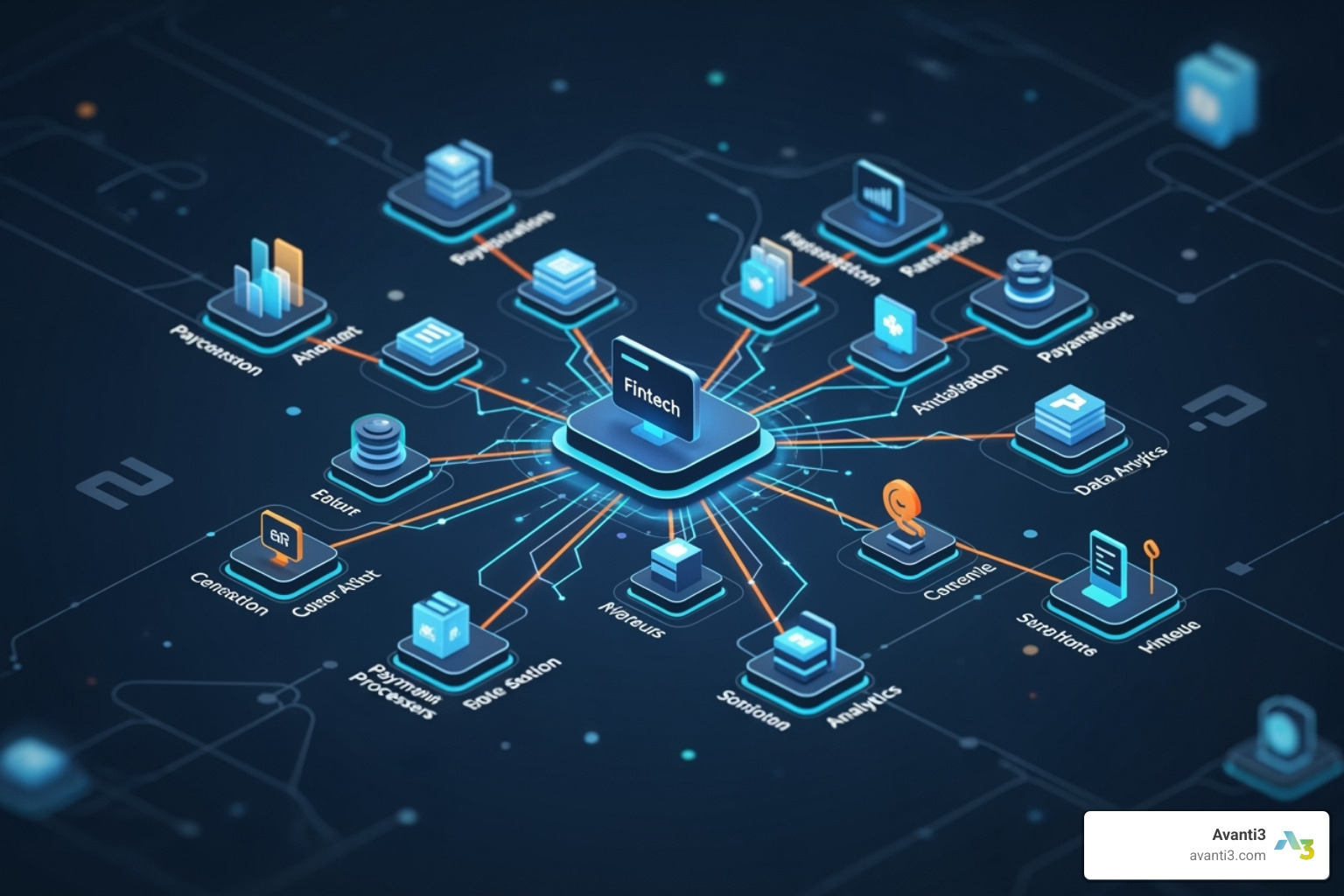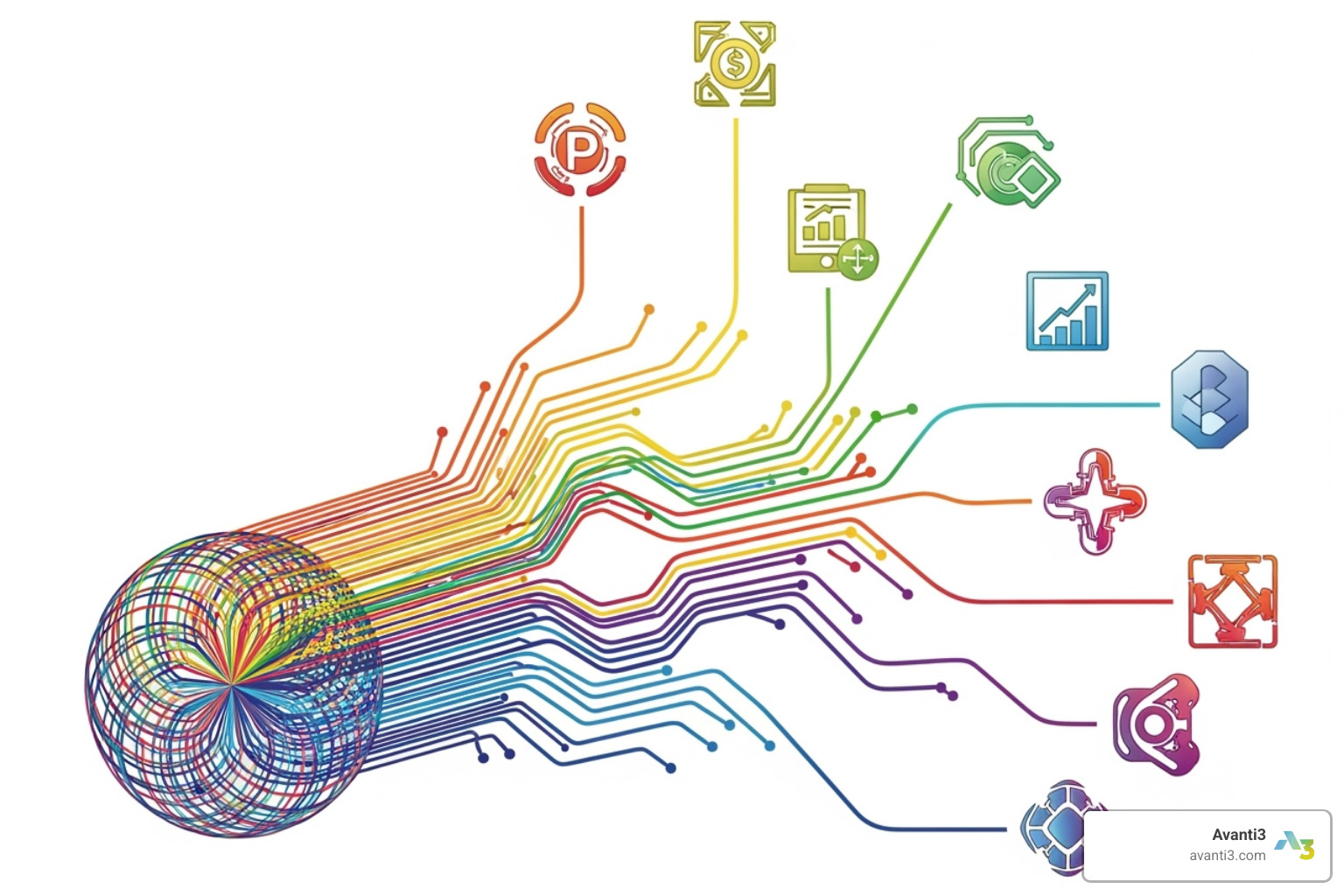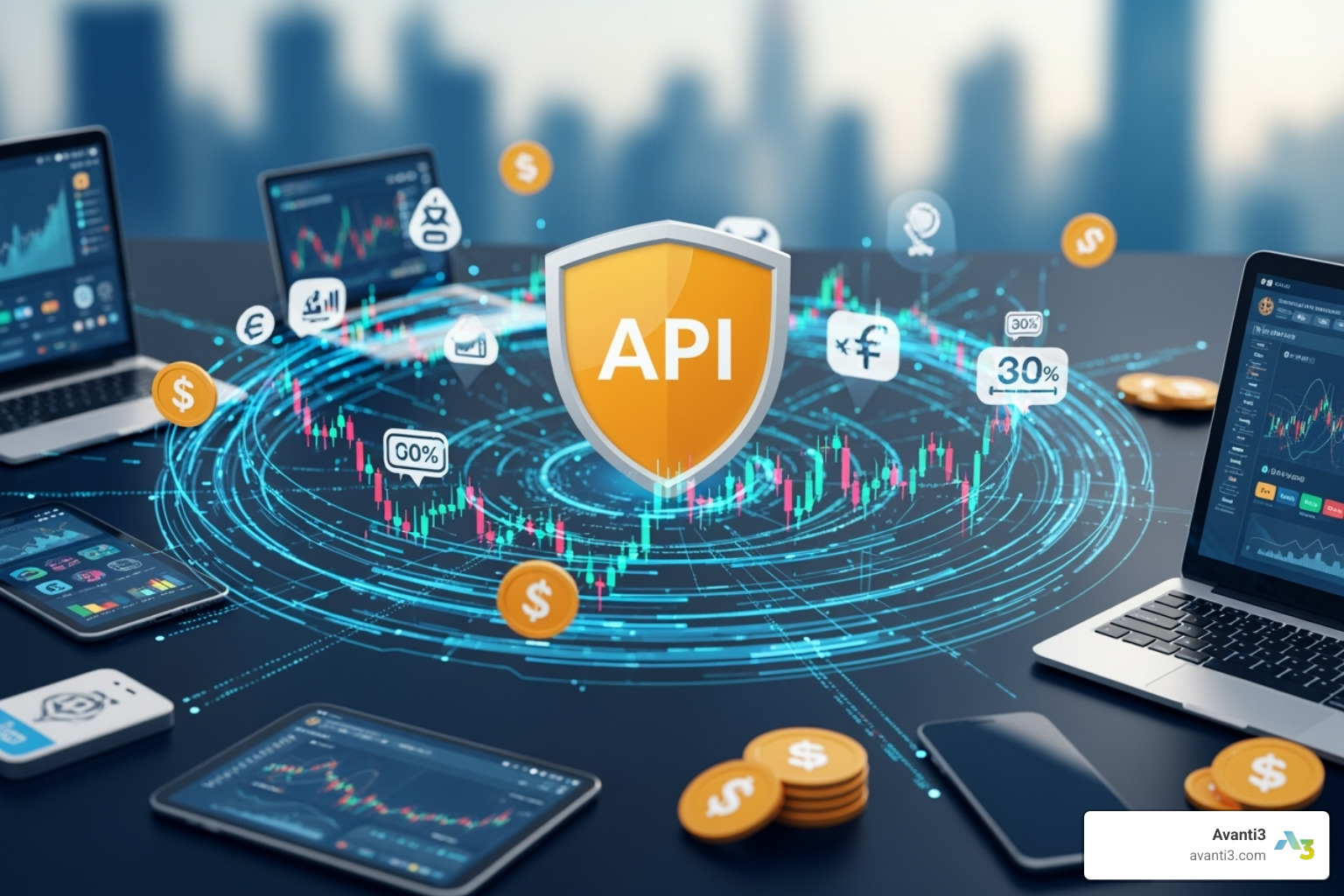Api Integrations for Fintech: Seamless 2025 Magic
Why API Integrations Are Revolutionizing the Financial Technology Landscape
FinTech has shifted from isolated, brick-and-mortar institutions to a borderless digital ecosystem—and APIs are the glue holding it all together. By letting separate systems “talk” in real time, Application Programming Interfaces enable everything from one-tap checkouts to robo-advisors that rebalance portfolios while you sleep.
Key facts that underline the shift:
- 88 % of organizations say APIs are more important now than two years ago.
- The global FinTech market is on track to hit $699 billion by 2030.
- Large banks now devote roughly 14 % of their IT budgets to API initiatives because 90 % of transactions already happen outside physical branches.
What makes this so exciting is possibility: creators and brands can weave payments, rewards, or finance features directly into the apps and communities they already own—opening fresh revenue streams without becoming a bank themselves.
Samir ElKamouny, Founder of Avanti3, has watched countless businesses open up new growth by connecting traditional finance rails with Web3 tools, digital rewards, and immersive experiences. The right API strategy can turn a good product into a category-defining platform.
Core FinTech API types you’ll meet along the way:
- Banking APIs – account data & balances
- Payment APIs – fast, global transactions
- Identity APIs – KYC, fraud checks
- Investment APIs – market data & trading
- RegTech APIs – automated compliance
Similar topics to api integrations for fintech:
What Are FinTech APIs and Why Are They the Engine of Modern Finance?
A decade ago, getting a loan meant paperwork and waiting weeks. Today, approval often happens in minutes while you shop online. That speed is powered by API integrations.
APIs act like multilingual interpreters. They let a budgeting app request account data, or a checkout page call a payment service, without exposing sensitive bank systems. Because the language is standardized, third-party developers innovate rapidly instead of rebuilding core finance infrastructure from scratch.
Why does this matter now?
- FinTech revenue is projected to reach $699 billion by 2030.
- 88 % of organizations rank APIs as a top tech priority.
How a FinTech API Works in 3 Steps
- Your app sends a secure request to the API (for example, “Show balance”).
- The API verifies identity, fetches the data from the bank, and formats it.
- Your app receives the answer in milliseconds—no direct database access required.
That simplicity fuels Open Banking and Banking-as-a-Service. Start-ups can plug verified components into their product, then focus on user experience rather than compliance plumbing.
Benefits for Businesses and Consumers

- Lower cost & faster launch – months instead of years.
- Personalized experiences – apps can analyze spending in real time and tailor offers.
- Automation & scale – identity verification, credit checks, and compliance run 24/7.
- Financial inclusion – small businesses and creators can now offer sophisticated services previously limited to large institutions.
At Avanti3 we merge these API rails with Web3 tools—NFT rewards, tokenized memberships, and AR experiences—turning ordinary transactions into engaging community moments.
The Core Categories of API Integrations for FinTech

Think of FinTech APIs as a toolbox. Each category open ups a different capability, and most successful products combine several at once.
1. Banking & Data Aggregation
These APIs expose real-time balances, transaction history, and account metadata through regulated Open Banking frameworks. They let users view all accounts in one place or trigger automated savings rules—without your app ever storing login credentials.
2. Payment Processing
Payment APIs handle the heavy lifting of authorizing cards, digital wallets, and bank transfers, plus subscription billing and dispute management. Built-in fraud screening and global settlement allow businesses to sell in new markets with minimal overhead.
3. Identity, Security & Compliance (RegTech)
KYC, AML, and fraud-detection APIs verify government IDs, scan sanctions lists, and score risk in real time. Automating these steps slashes onboarding time from days to minutes while keeping regulators happy.
4. Investment & WealthTech
Market-data and brokerage APIs democratize trading, portfolio tracking, and even crypto access. Combined with tokenized assets or NFTs, they open novel revenue models—something Avanti3 leverages in our NFT Marketplace Development work.
By selecting only the categories you need, you avoid over-engineering and keep development time (and costs) under control.
Navigating the Risks: Security and Compliance in FinTech APIs

Opportunity and risk rise together. The average application now calls 26-50 APIs, so every new connection widens the attack surface. A single breach can cost millions and damage customer trust overnight.
Security Best Practices
- DevSecOps from day one – bake security into the development pipeline.
- Zero-Trust architecture – authenticate every request.
- API gateways – centralize authentication and traffic monitoring.
- Encryption & tokenization – protect data in transit and at rest.
- Continuous monitoring – breaches take 178 days on average to detect; real-time alerts are vital.
Staying Compliant
Financial regulations mandate strict oversight. Follow internationally recognized frameworks (e.g., GDPR, PSD2) and financial-grade API guidelines. Schedule independent penetration tests, minimize stored data, and maintain a rehearsed incident-response plan.
Meeting these standards isn’t overhead; it’s the trust foundation that lets users connect their finances to your product without hesitation.
A Strategic Guide to Implementing FinTech APIs
Smart integration is equal parts business design and engineering. Rushing costs more later—especially when money and compliance are involved.
Step 1 — Define the Outcome
Map user journeys and list only the data points required for version 1. Prioritize features that deliver the biggest impact, then trim the rest for phase two.
Step 2 — Choose the Right Partners
Evaluate documentation clarity, uptime SLAs, rate limits, pricing, and security audits. Great docs and responsive support can cut integration time in half.
Phased Roll-Out
- MVP – core account connection or payment flow in a sandbox.
- Improve – add new payment methods, analytics, or rewards loops.
- Scale – optimize performance, monitoring, and versioning before user numbers explode.
Plan for observability and automated testing from day one so surprises show up in staging—not after launch.
The Future of FinTech APIs: Web3, AI, and Beyond
AI is turning APIs into predictive engines that anticipate cash-flow gaps or investment opportunities before users do. Meanwhile, embedded finance is projected to add $230 billion in new revenue by 2025, weaving lending or insurance directly into non-financial apps.
DeFi and smart-contract APIs push the concept further, enabling self-executing agreements and tokenized assets. At Avanti3, we already merge these rails into engaging experiences like NFT Digital Art Sales and Digital Reward System, proving that finance can be both transparent and fun.
The golden rule: build flexible architecture today so you can plug tomorrow’s innovations in with minimal refactor.
Frequently Asked Questions about FinTech API Integrations
What is Open Banking?
Open Banking lets consumers give third-party apps secure API access to their account data, fostering competition and personalized services. Regulatory frameworks such as PSD2 in Europe set the security and consent rules.
How long does it take to integrate a FinTech API?
Timelines vary from a few months for simple payment flows to a year for multi-service, heavily regulated products. Key variables are compliance reviews, security testing, and the quality of an API provider’s documentation.
Payment Gateway vs. Payment Processor API
A gateway API collects and encrypts payment details at checkout, while a processor API moves the money through card networks or banking rails. Many modern providers bundle both so developers integrate once instead of twice.
Conclusion
The change of financial services through API integrations for fintech represents one of the most exciting technological shifts we’ve witnessed in decades. These digital bridges aren’t just connecting systems – they’re completely reimagining how we think about money, payments, and financial experiences.
The numbers tell an incredible story. With the FinTech sector racing toward $699 billion by 2030 and 88% of organizations recognizing that APIs have become absolutely critical, we’re not just watching an evolution – we’re in the middle of a revolution. The fact that 90% of transactions now happen outside traditional bank branches shows us that digital-first isn’t just trendy, it’s the new reality.
But here’s what makes this change truly remarkable: API integrations for fintech are doing more than making things faster or cheaper. They’re creating entirely new ways to do business. From embedded finance that lets you get a loan while shopping online to decentralized financial services that operate without traditional banks, these APIs are opening doors that didn’t even exist a few years ago.
The security aspect remains absolutely crucial, and frankly, it should. When you’re dealing with people’s money and financial data, there’s no room for shortcuts. The DevSecOps approaches, Zero-Trust architectures, and continuous monitoring we’ve discussed aren’t just best practices – they’re the foundation that makes all this innovation possible. That sobering statistic about breaches taking 178 days to detect on average? It’s exactly why proactive security isn’t optional in financial services.
Looking ahead, the convergence of traditional finance with emerging technologies gets me genuinely excited. Web3 technologies, AI, and immersive digital experiences are creating possibilities we’re only beginning to explore. The embedded finance market’s projected $230 billion opportunity by 2025 is just the tip of the iceberg.
At Avanti3, we’re passionate about helping organizations steer this complex but incredibly rewarding landscape. Our expertise in blending Web3 technologies with traditional financial services puts us in a unique position to help businesses not just keep up with change, but lead it. We understand that the future of finance isn’t about replacing human connections – it’s about using technology to make those connections more meaningful and valuable.
The organizations that will truly thrive are those that see API integrations as more than a technical requirement. They understand these integrations as strategic advantages that can differentiate their business and create exceptional user experiences. They’re not just implementing APIs – they’re crafting the future of financial engagement.
Whether you’re looking to streamline payment processing, develop groundbreaking financial products, or create digital experiences that truly engage your audience, success starts with a solid API strategy. The future of finance is being built right now, one thoughtful integration at a time.
Ready to transform your financial platform into something extraordinary? Build the next generation of engaging financial experiences with our digital experience design services and find how Avanti3 can help you create innovative solutions that set new standards in digital engagement and financial innovation.







